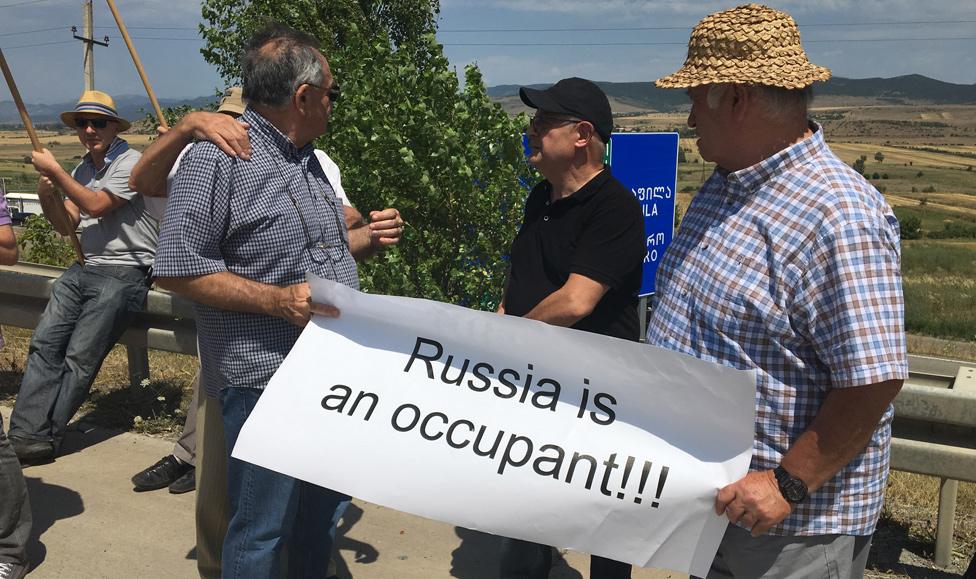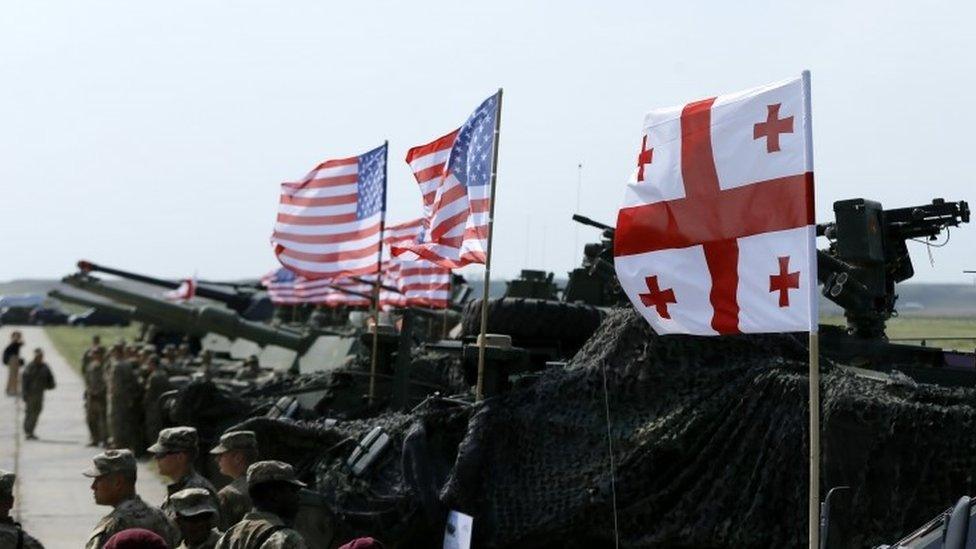Georgians mourn Russian land grab in South Ossetia war
- Published
Georgian protesters said South Ossetia was unfinished business
Several hundred Georgians have formed a human chain on a main road near the country's Russian-controlled South Ossetia region.
"The war did not finish in 2008 - it continues every day, because the Russian occupiers are on our land," said protest organiser David Katsarava.
Young and old held hands and stood in silence under the scorching sun.
Many held Georgian flags and banners condemning Russia's occupation, which gave firepower to pro-Russian rebels.
"Our aim is to unite people and to give them the feeling that it's possible to change something in this war," says Mr Katsarava.
In early August 2008, Georgia attempted to recapture breakaway South Ossetia, which had fought a separatist war with Georgia in the 1990s.

A ceasefire froze the conflict but Russia has consolidated its grip on both regions
The fighting in 2008 escalated after cross-border skirmishes.
Russia responded with a massive invasion. It also seized control of Abkhazia, in support of separatists there. Both regions are internationally recognised as Georgian territory.
The five-day war ended in humiliation for Georgia - several towns, a Black Sea port and military airfields were bombed by the Russian air force.
Several hundred people were killed and thousands of ethnic Georgians displaced by the conflict. Georgian villages in South Ossetia were razed to the ground.
The International Criminal Court (ICC) is conducting an investigation into alleged war crimes committed during the war.


South Ossetia, officially part of Georgia, is separated from the North Ossetia region of Russia by an international border. It is inhabited mostly by Ossetians, who are ethnically and linguistically distinct from other peoples in the region. Most ethnic Georgians have been displaced from South Ossetia by conflict.
Georgia, including South Ossetia, was part of the Russian empire in the 19th Century. After the 1917 communist revolution, Georgia became independent but it was declared part of the Soviet Union in 1921.
After the 2008 war, Moscow recognised South Ossetia as an independent state and began a process of closer ties that Georgia views as effective annexation.


In Georgia's capital Tbilisi relatives mourned loved ones killed in the 2008 war
South Ossetia and Abkhazia depend on Russia militarily and financially. Thousands of Russian troops are stationed in the two regions.
Moscow has signed strategic agreements with both regions, bringing them firmly into its sphere of influence.
While the Georgian protest was taking place Russian President Vladimir Putin was visiting Abkhazia.
Just last week US Vice President Mike Pence visited Georgia. He voiced strong US support for Georgia's territorial integrity, and the two countries launched their biggest ever joint military exercises.
- Published30 July 2017
